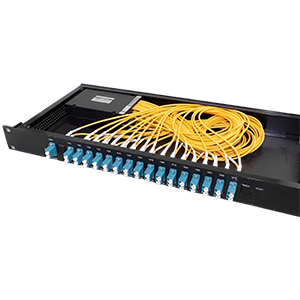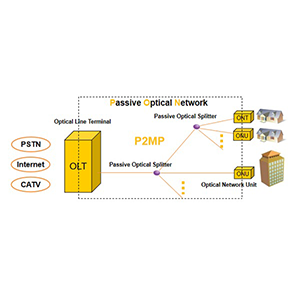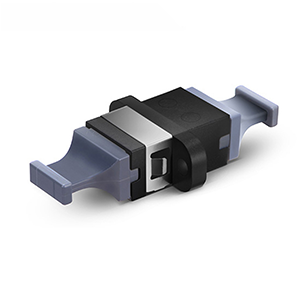MPO fiber connectors play an important role in high-density optical networks. This article will focus on comparing the similarities and differences between MPO 8 and MPO 12. We will first define the structure and working principle of MPO 8 and explain its main technical parameters and performance indicators; then, we will explain the structure and working principle of MPO 12 and introduce its main technical parameters and performance indicators.
Next, we will focus on comparing the differences between MPO 8 and MPO 12 in terms of fiber quantity, physical size, application scenarios, performance indicators, etc., and analyze the impact of these differences on network capacity, transmission performance, installation management, link quality and system reliability. Finally, we will provide decision-making basis for choosing MPO 8 or MPO 12 according to specific application requirements.
Overview of MPO 8 Fiber Connectors
Let me give you a detailed introduction to the basic concepts of MPO 8 fiber connectors.
MPO 8 structure and working principle:
(1) Structural features:
- MPO 8 adopts a structural design with 8 optical fiber cores arranged side by side
- Including precise optical fiber arrangement module, metal shell and other components
- Multi-channel optical signal transmission is achieved through highly aligned mechanical docking
(2) Working principle:
- MPO 8 connector docks and connects 8 optical fibers at the same time
- Use precise optical fiber positioning and shell matching to achieve stable optical connection
- Can achieve bidirectional synchronous transmission of 8 optical signals
In general, MPO 8 connector uses a unique structural design with 8 optical fibers arranged side by side, and achieves high-density synchronous transmission of multiple optical signals through precise mechanical docking. This is its core technical feature.
Main technical parameters and performance indicators of MPO 8:
(1) Number of fiber cores
- The MPO 8 connector has 8 independent fiber cores
- It can meet the needs of medium-density optical transmission
(2) Optical insertion loss
- The optical insertion loss of the MPO 8 connector is usually between 0.2-0.5dB
- The lower optical insertion loss ensures good signal transmission quality
(3) Return loss
- The return loss of the MPO 8 connector is usually between 45-60dB
- The high return loss ensures the excellent reflection characteristics of the optical signal at the connection
(4) Working temperature
- MPO 8 connectors can operate in a temperature range of -40°C to +75°C
- Can meet the application requirements of outdoor and harsh environments
(5) Durability
- MPO 8 connectors can usually withstand more than 300 connection/disconnection cycles
- High mechanical reliability and service life
In short, MPO 8 connectors are widely used in medium-density optical communication systems due to their excellent performance such as synchronous transmission of 8 optical signals, low optical insertion loss, and high return loss.
Overview of MPO 12 Fiber Connectors
Let me give you a detailed introduction to the basic concepts of MPO 12 fiber connectors.
The structure and working principle of MPO 12:
(1) Structural features:
- MPO 12 adopts a design with 12 optical fiber cores arranged side by side
- Including precise optical fiber arrangement module, metal shell and other components
- Multi-channel optical signal transmission is achieved through highly aligned mechanical docking
(2) Working principle:
- MPO 12 connector docks and connects 12 optical fibers at the same time
- Use precise optical fiber positioning and shell matching to achieve stable optical connection
- Can achieve bidirectional synchronous transmission of 12 optical signals
In general, MPO 12 connector uses a unique structural design with 12 optical fibers arranged side by side, and achieves high-density synchronous transmission of multiple optical signals through precise mechanical docking. This is its core technical feature.
Main technical parameters and performance indicators of MPO 12:
(1) Number of fiber cores
- The MPO 12 connector has 12 independent fiber cores
- It can meet the needs of high-density optical transmission
(2) Optical insertion loss
- The optical insertion loss of the MPO 12 connector is usually between 0.2-0.5dB
- The lower optical insertion loss ensures good signal transmission quality
(3) Return loss
- The return loss of the MPO 12 connector is usually between 45-60dB
- The high return loss ensures the excellent reflection characteristics of the optical signal at the connection
(4) Working temperature
- MPO 12 connectors can operate in a temperature range of -40°C to +75°C
- Can meet the application requirements of outdoor and harsh environments
(5) Durability
- MPO 12 connectors can usually withstand more than 500 connection/disconnection cycles
- High mechanical reliability and service life
In short, MPO 12 connectors are widely used in high-density optical communication systems due to their excellent performance such as simultaneous transmission of 12 optical signals, low optical insertion loss, and high return loss.
Differences between MPO 8 and MPO 12
Let me compare the main differences between MPO 8 and MPO 12 fiber optic connectors in detail.
Number of Fibers:
- MPO 8 has 8 independent fiber cores, while MPO 12 has 12
- The higher fiber density of MPO 12 can provide greater transmission capacity
- This makes MPO 12 more suitable for applications that require high bandwidth, such as data centers, 5G, etc.
Physical Dimensions:
- The size and weight of MPO 12 are slightly larger than MPO 8
- This makes the installation and management of MPO 12 slightly more complicated
- But MPO 12 can still adapt well to various installation environments
Application Scenarios:
- MPO 8 is more suitable for medium-density optical transmission needs, such as small data centers.
- MPO 12 is more suitable for high-density, high-bandwidth applications, such as large data centers and 5G base stations.
Performance indicators:
- The insertion loss and return loss indicators of MPO 8 and MPO 12 are roughly the same.
- But the performance indicators of MPO 12 are slightly better than MPO 8, which can provide higher link quality.
- This is very important for some applications with higher transmission quality requirements.
In short, although there are some differences between MPO 8 and MPO 12 in terms of fiber quantity, size, and applicable scenarios, they are both reliable fiber connection solutions. It is important to choose the right MPO connector type for different application requirements, which will directly affect the performance and reliability of the entire optical communication system.
Selection principles for MPO 8 and MPO 12
Let me summarize for you the main factors to consider when choosing an MPO 8 or MPO 12 connector.
Selection based on application scenarios:
(1) Medium-density applications
- Such as small data centers, buildings, etc.
- MPO 8 can meet the optical transmission requirements of such applications
(2) High-density applications
- Such as large data centers, 5G networks, etc.
- MPO 12 is more suitable for such scenarios requiring high bandwidth
(3) Fiber layout restrictions
- Such as small wiring space, dense cabinets, etc.
- The smaller size of MPO 8 may be more suitable
Considering the fiber density requirements of the actual application and the physical installation environment, it is critical to select the appropriate MPO connector type.
Selection based on system performance indicators:
(1) Transmission capacity
- MPO 12 has higher fiber density and transmission bandwidth
- More suitable for applications requiring large-capacity transmission
(2) Signal quality
- MPO 12 is slightly better than MPO 8 in terms of optical insertion loss, return loss and other indicators
- More suitable for applications with higher signal quality requirements
(3) Reliability
- MPO 12 has slightly better carrying capacity and service life than MPO 8
- Suitable for scenarios with higher requirements for reliability and long-term stability
Select MPO 8 or MPO based on the specific requirements of the application system for transmission capacity, signal quality and reliability. 12 helps to achieve the best system performance.
In short, when choosing the type of MPO connector, you need to consider the application scenario, physical environment, and system performance indicators to make the best choice. This will ensure that the optical communication system can achieve the best performance and reliability.
Summary
Choosing the right MPO fiber connector is crucial to building a high-density, high-performance optical network. Our company has long been focusing on the research and development and production of optical communication equipment and its supporting products, and has rich industry experience. The MPO 8 and MPO 12 fiber connector products we provide have reached the industry-leading level in terms of transmission performance and reliability, and can meet your demanding needs for flexible and efficient network construction.
Whether you need to deploy MPO connectors in data centers, 5G networks, or enterprise parks, we can provide you with customized solutions. At the same time, our professional team will provide you with a full range of technical support, including on-site surveys, solution design, and equipment installation and maintenance. Contact us now to learn more about the application of MPO 8 and MPO 12.
MPO Fiber Optic Connectors FAQ
An MPO 8 cable has an MPO connector with 8 individual optical fibers terminated within the connector.
An MPO 12 cable has an MPO connector with 12 individual optical fibers terminated within the connector.
The primary difference is the fiber count – MPO 8 has 8 fibers, while MPO 12 has 12 fibers per connector.
MPO 8 is often used for 10GbE and 40GbE Ethernet, while MPO 12 supports 40GbE and 100GbE networks.
The MPO 12 connector is slightly wider than the MPO 8 due to the additional fibers, but the overall profile is similar.
No, the different fiber counts mean MPO 8 and MPO 12 cables require compatible MPO ports and transceivers.
Yes, using breakout or fanout cables, an MPO 8 cable can be converted to multiple MPO 12 connections.
Both singlemode and multimode fiber types are available in MPO 8 and MPO 12 cable configurations.
The higher fiber count of MPO 12 may result in slightly higher insertion loss compared to MPO 8.
Factors include the network speed, fiber type, port density requirements, and overall cabling management needs.




